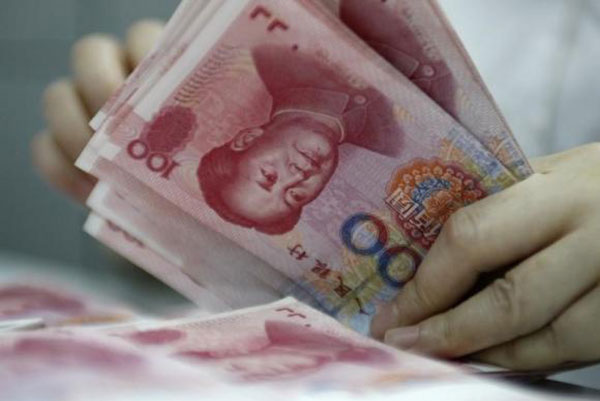Greater convergence likely between offshore, onshore bond trading
By Zheng Yangpeng (China Daily) Updated: 2015-10-17 09:45
 |
|
An employee counts yuan banknotes at a bank in Huaibei, Anhui province June 22, 2010.[Photo/Agencies] |
Recent data are pointing to greater convergence between the onshore renminbi bond market and the much smaller offshore market, which means overseas investors would have to pay greater attention to issuers' credit developments in the onshore market.
The most illustrating display of the greater convergence is that yield curves on Chinese government renminbi bonds traded onshore and offshore are more closely aligned, as has also been the case with interbank offered rates.
"(The two markets) demonstrate increasingly similar - if not eventually identical - trends and become subject to similar drivers," said the quarterly report by Moody's Investors Service Inc.
The credit ratings agency said as the central government continued relaxation of capital controls, it has become increasingly easier for Chinese companies to access overseas debt markets. That is why investors see the convergence in pricing.
Jenny Shi, Managing Director and Country Manager for China at Moody's, said when the two markets are close, they operate independently. With channels to cross over to the other markets, arbitrage activities - sell high in one market and buy low in another market - will flourish.
Without liberalization of capital accounts, institutional barriers and higher transaction costs would hinder such arbitrage activities.
"We expect it will be lasting. It is underpinned by more opening and liberalization for onshore and offshore investors and issuers to cross over," said Jenny Shi, managing director and country manager for China at Moody's.
Separately, she said, with a significant number of large issuers in the onshore market now rated by Moody's, this level of convergence means that credit developments - such as ratings adjustment made by the agency in one market - could have implications for investors in the other.
As of August, 47 of the top 200 onshore credit bond issuers had been rated by Moody's and can access the offshore bond market.
In terms of volume, the onshore renminbi bond market remains predominant, totaling 42.3 trillion yuan ($6.68 trillion) by the end of August, well in excess of outstanding offshore bonds by Chinese issuers at about $362 billion, according to Dealogic, an international financial services provider. At the same time, less than 1.5 percent of the onshore bonds were held by international investors as of June 30.
Moody's also predicted that after the implementation of the Shanghai-Hong Kong Stock Connect and Mainland-Hong Kong Mutual Recognition of Fund initiatives, Beijing is likely to launch similar "bond connect" initiatives with Hong Kong in the next 12-18 months, which will expedite convergence.
- 'Ghostly' goings-on attract business at Halloween
- B2C better model for China's ride-booking sector: UCAR
- Belt and Road will lead China to closer interaction with the world
- China's property investment continues to slow
- China's industrial output up 5.7% in September
- China's fixed-asset investment continues to slow
- BP committed as partner to China
- The Seventh Exposition Conference of Chinese Cities held in Hangzhou

















